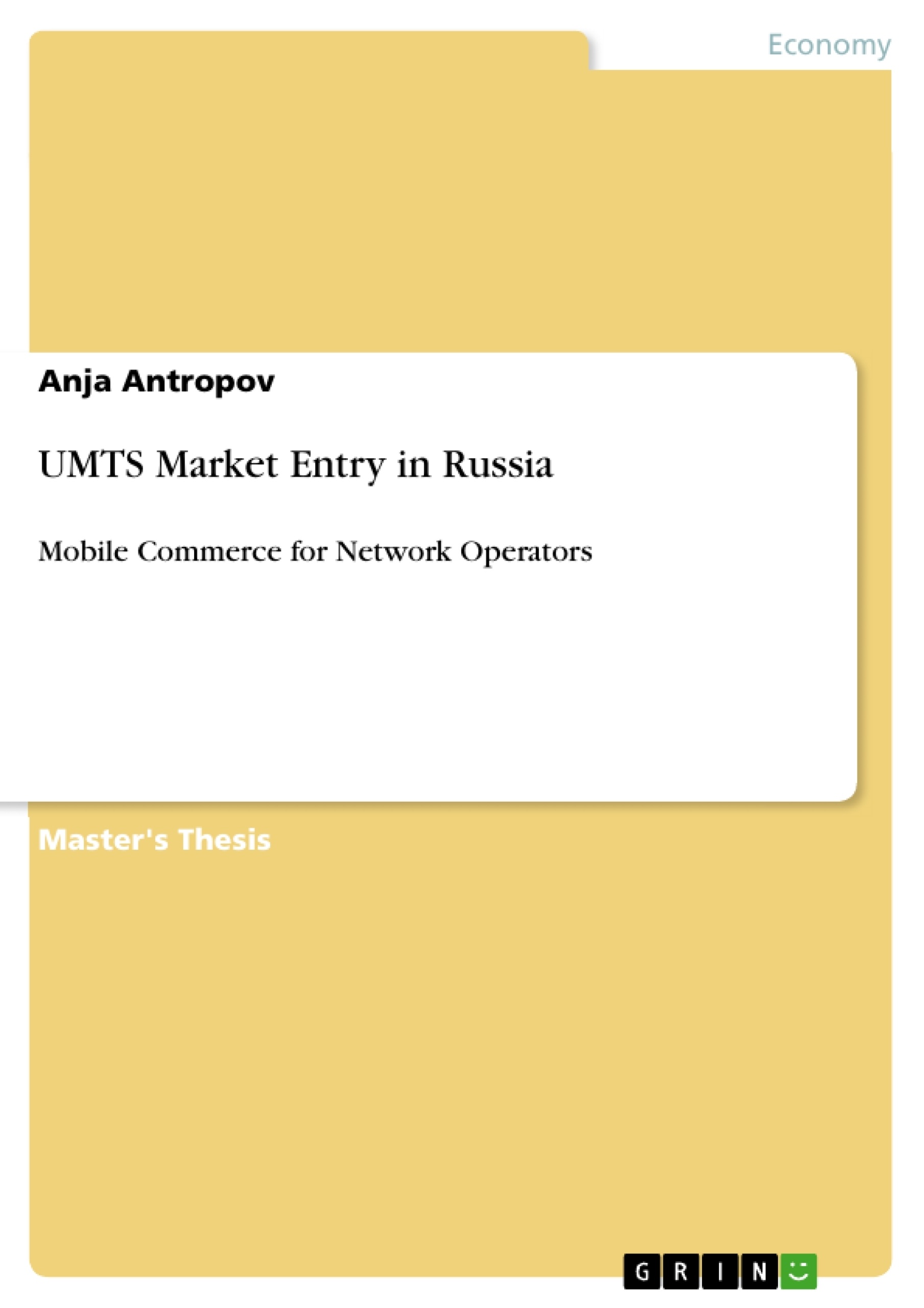The aim of this master`s thesis is to understand the changes which will happen in the mobile communication industry due to the introduction of UMTS and to develop a positioning strategy for mobile network operators in the future UMTS market in Russia.
The mobile communications industry is entering a new era. Here, not mobile telephony, but mobile data transmission is increasingly playing a leading role. A growing number of people use their mobile phone to send short messages or to receive information when they are on the move. The three markets telecommunication, information technology and multimedia are converging and paving the way for the information society. Mobile internet access is not only a vision, but is already in its first stages. The key word of this new era is “m-commerce”, the possibility to have communication, information, entertainment and transactions while mobile . The key enabler to bring all these services into the mobile environment is UMTS, the Universal Mobile Telecommunications System. It is the global telecommunication system of the third generation enabling data transmission of up to 2 Megabit per second.
This master’s thesis was written in co-operation with Siemens AG ICM N V118 sales Russian Federation. As vendor for infrastructure and applications for mobile communications as well as services and trainings for mobile network operators, Siemens has been active in Russia for several years. Due to its high growth potential the Russian mobile communications market is rather attractive for infrastructure vendors and, therefore, increasingly competitive.
Inhaltsverzeichnis (Table of Contents)
- Introduction
- Subject and objectives of the thesis
- Delimitation of the topic
- Methodology
- Theoretical frame: Strategic management
- Kurt Aeberhard: market system analysis
- Michael Porter: the value system and strategic analysis of vertical integration
- The mobile industry
- Worldwide market trends
- Evolution from mobile communications to mobile commerce
- M-commerce - the new service possibilities
- Changes in the market system
- System analysis of the European mobile communications market
- System analysis of the European mobile commerce market
- Market players of the mobile commerce market
- Environmental factors
- The value system of the mobile commerce industry
- The Russian mobile industry
- Current development of the Russian mobile communications market
- System analysis of the Russian mobile commerce market
- Possible players of the mobile commerce market
- Environmental factors
- Market potential for mobile commerce: end user requirements
- Strategic options for Russian mobile network operators
- Conclusion
- Bibliography
- Annex
Zielsetzung und Themenschwerpunkte (Objectives and Key Themes)
This master's thesis examines the potential for mobile commerce in the Russian mobile communications market. It explores the key factors influencing the development of mobile commerce in this context, analyzes the market structure and potential players, and outlines strategic options for mobile network operators. Key themes investigated include:- The evolution of mobile communications to mobile commerce
- Market system analysis of the European and Russian mobile communications markets
- The value system of the mobile commerce industry
- The strategic considerations for mobile network operators in Russia
- The potential for mobile commerce and its impact on the Russian market
Zusammenfassung der Kapitel (Chapter Summaries)
The introduction defines the subject and objectives of the thesis, outlining the research focus on mobile commerce in Russia. It also delimits the scope of the study and details the chosen methodology.
Chapter 2 provides a theoretical framework for understanding the mobile commerce market through the lens of strategic management. It examines two prominent models: Kurt Aeberhard's market system analysis and Michael Porter's value system analysis, focusing on vertical integration.
Chapter 3 analyzes the global mobile industry, outlining worldwide market trends and the evolution of mobile communications to mobile commerce. It examines the new service possibilities and changes in the market system, including a detailed system analysis of the European mobile communications and mobile commerce markets. The chapter concludes with a review of the value system of the mobile commerce industry.
Chapter 4 delves into the specifics of the Russian mobile industry, exploring the current development of the Russian mobile communications market. It provides a system analysis of the Russian mobile commerce market, examining potential players, environmental factors, and the market potential for mobile commerce, including an analysis of end-user requirements.
Chapter 5 explores strategic options for Russian mobile network operators, outlining potential pathways for success in the emerging mobile commerce market.
Schlüsselwörter (Keywords)
Mobile commerce, Russia, mobile communications market, strategic management, market system analysis, value system, market potential, end-user requirements, strategic options, mobile network operators.- Quote paper
- Anja Antropov (Author), 2001, UMTS Market Entry in Russia, Munich, GRIN Verlag, https://www.grin.com/document/147833



